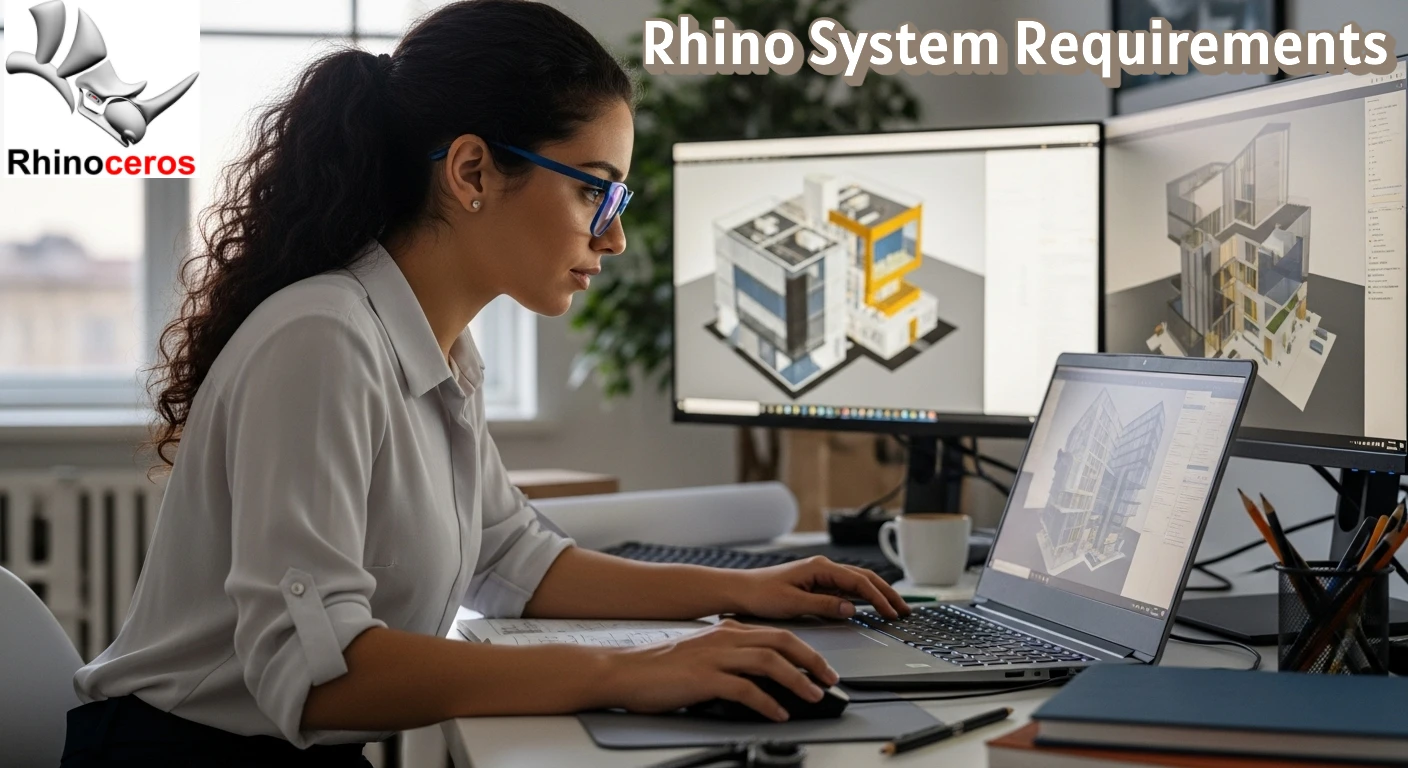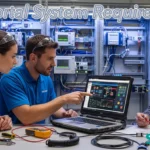If you’re into 3D design, architecture, or product modeling, chances are you’ve crossed paths with Rhino 3D. It’s powerful, flexible, and—let’s be honest—pretty demanding when it comes to your computer’s performance.
So if you’re wondering, “Can my PC handle Rhino 8?” or “What specs do I need to run it smoothly?”—you’re in the right place.
Below, we’ll go through official requirements, real-world recommendations, and a few tips to help you choose the right setup without wasting money on unnecessary upgrades.
Also Read: Best laptops for Rhino 3D
🖥️ Official Rhino 8 System Requirements
Let’s start with what McNeel officially recommends. These are the minimum and baseline specs that Rhino 8 needs to install and run.
| Component | Minimum Requirement | Recommended |
|---|---|---|
| Operating System | Windows 10 / 11 (64-bit) or macOS Monterey (12.4+) | Latest Windows 11 or macOS Sonoma |
| Processor (CPU) | 64-bit Intel or AMD | Latest Intel i7/i9, AMD Ryzen 7/9, or Apple M2/M3 |
| Memory (RAM) | 8 GB | 16–32 GB for larger models |
| Graphics (GPU) | OpenGL 4.1 / Metal-capable GPU with 2–4 GB VRAM | NVIDIA RTX / AMD Radeon with 6–8+ GB VRAM |
| Storage | 5–10 GB free space | NVMe SSD recommended |
| Display | 1920×1080 resolution | QHD or 4K display for precision work |
💡 Tip: A mouse with a scroll wheel (or a 3Dconnexion SpaceMouse) makes modeling in Rhino much more comfortable.
⚙️ Real-World Recommendations (for Smooth Modeling)
The “minimum” specs will get Rhino running, but not necessarily running well.
If you’re dealing with complex models, rendering, or Grasshopper scripts, you’ll want a little more horsepower.
- CPU: Rhino loves single-core speed. Go for a high-clock CPU (Intel i7/i9, Ryzen 7/9, or Apple M-series).
- RAM: 16 GB is fine for basic work; 32 GB or more is better for multitasking or large files.
- GPU: Invest in a solid mid-range or high-end card (RTX 4060–4080 range). For Mac users, M2 Pro or M3 Pro chips deliver smooth Metal performance.
- Storage: Always choose an NVMe SSD. It’s one of the easiest and most noticeable upgrades.
🧠 macOS vs. Windows for Rhino
- Mac Users: Rhino 8 runs natively on Apple Silicon using Metal, and performance is surprisingly good. Make sure you’re on macOS 12.4 or later.
- Windows Users: You’ll benefit from more GPU options and plugin compatibility. Rhino supports OpenGL 4.1, so any modern NVIDIA or AMD card will do the job.
💼 Choosing the Right Machine for Rhino
If you’re shopping for a new system, here’s a quick reference:
| User Type | Recommended Specs | Example Use Case |
|---|---|---|
| Student / Beginner | i5 or Ryzen 5, 16 GB RAM, GTX 1650 / integrated M2 | Learning Rhino, small projects |
| Professional Designer | i7/i9 or Ryzen 7/9, 32 GB RAM, RTX 4060 / M3 Pro | Architecture, product design |
| Advanced User / Studio | i9 / Ryzen 9, 64 GB RAM, RTX 4080+ / M3 Max | Rendering, complex Grasshopper workflows |
🚀 Pro Tips to Boost Rhino Performance
- Update your GPU drivers regularly. Rhino relies heavily on OpenGL or Metal for viewport performance.
- Use SSDs for both Rhino and your project folders — it speeds up loading and autosaves.
- Disable unnecessary plugins if Rhino feels slow during startup.
- Lower display mesh settings when working with very large models.
- Keep your system cool — overheating can throttle performance, especially on laptops.
🧩 FAQ: Common Questions About Rhino System Requirements
Yes, for most users it is. If you’re modeling small to medium projects or doing light rendering, 16GB works just fine. But if you handle large, detailed models or multitask with other heavy apps, moving up to 32GB will make a noticeable difference.
Rhino 8 needs a 64-bit computer, 8GB of RAM (16GB recommended), and a GPU that supports OpenGL 4.1 or Metal. It runs on Windows 10/11 and macOS 12.4 or newer. You’ll also want around 10GB of free disk space and a decent display resolution (1080p or higher).
Not really, but it can be demanding depending on what you do. Simple 3D modeling runs smoothly on modest systems, while complex designs, detailed renders, and Grasshopper scripts need more processing power and memory.
Technically, no — it can run on integrated graphics. But a dedicated GPU makes a huge difference. Viewports feel smoother, renders are faster, and you’ll experience fewer visual glitches. If you use Rhino often, it’s worth having a proper graphics card.
🧭 Final Thoughts
Rhino doesn’t demand a monster PC, but giving it the right balance of CPU speed, RAM, and GPU power makes a huge difference.
Whether you’re sketching early design concepts or rendering detailed architectural forms, investing in a capable setup pays off every single day.
🧰 How to Choose the Right System for Rhino 3D
Time needed: 5 minutes
Learn how to pick the best computer setup for Rhino 3D. Whether you’re modeling light projects or rendering complex surfaces, this 3-step guide will help you choose the right CPU, RAM, and GPU for smooth performance.
- Check the Official Rhino Requirements
Visit Rhino’s official website or documentation to review the latest system requirements for Rhino 8. Take note of the minimum CPU, RAM, GPU, and operating system specifications. This ensures your setup meets the software’s basic needs before upgrading.
- Match Specs to Your Workflow
Consider how you actually use Rhino.
*For basic modeling or learning, 16GB of RAM and a mid-range GPU are usually enough.
*For complex projects, rendering, or Grasshopper, aim for 32GB+ RAM and a higher-end CPU or GPU. Your workflow determines what matters most — speed, memory, or graphics power. - Choose Reliable Hardware for Performance
Pick a fast single-core CPU, a solid SSD, and a dedicated GPU that supports OpenGL 4.1 (Windows) or Metal (Mac). This combination gives you smoother viewports, faster file handling, and fewer slowdowns in Rhino.










